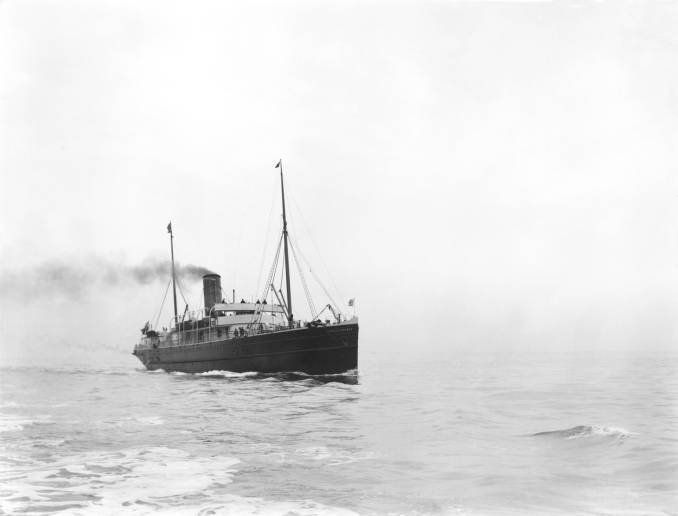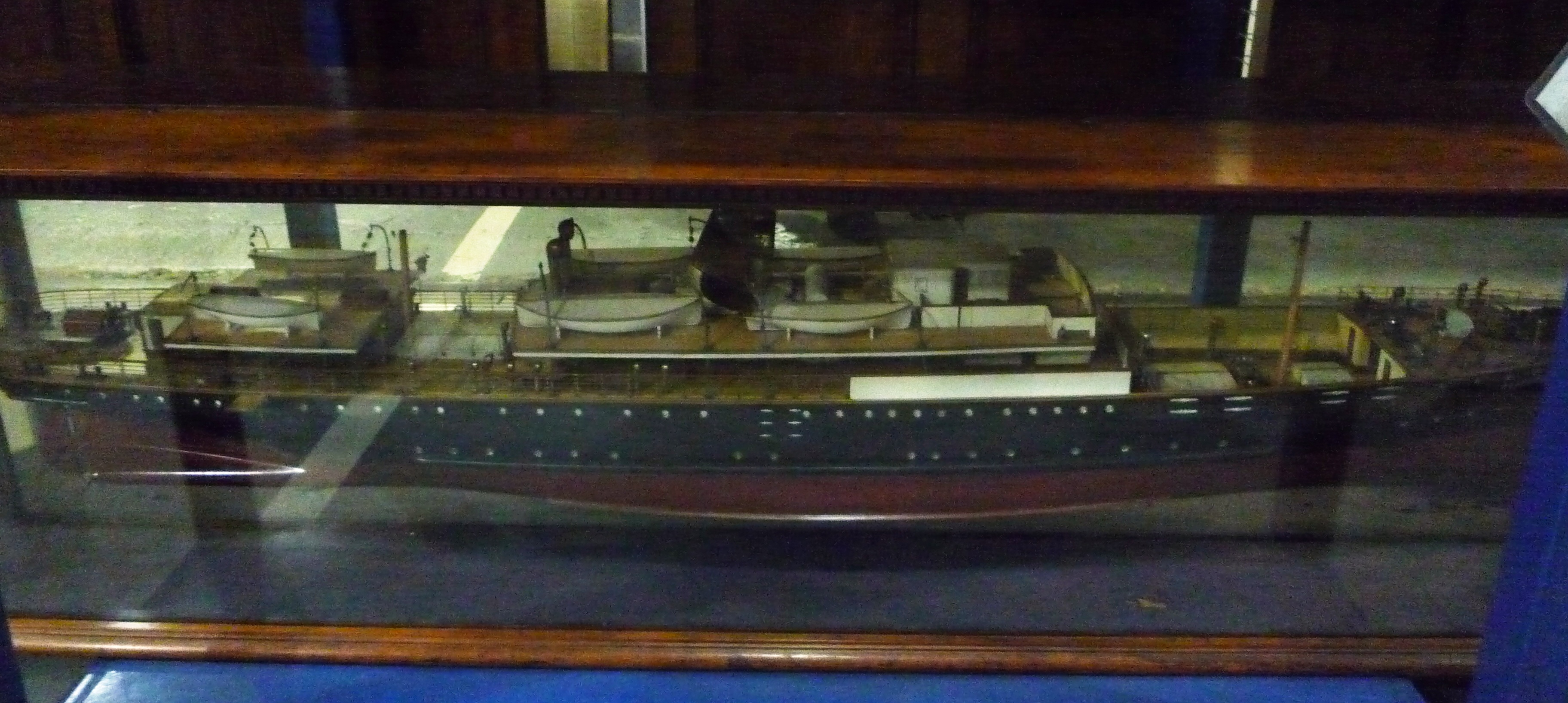When the First World War broke out some ships belonging to the merchant fleets of Britain’s railways were requisitioned for war use whilst others attempted to maintain existing services, in fact the only services to be completely abandoned were those to Belgium and occupied French ports.
The war at sea in 1914 was a somewhat haphazard affair with the North Sea proving to be the major arena. In the beginning German U-boat captains tended to follow the ‘prize rules’ of naval tradition in that they surfaced, challenged the merchant vessel, and after making adequate provision for the safety of the merchant crew and passengers either seized the vessel or sank it. Sometimes merchant crews were captured and interned but in other cases German submarines towed the lifeboats to within rowing distance of a neutral coast and set them free.
The British Admiralty countered this with the provision of Armed Boarding Vessel; essentially these were lightly armed merchant ships which would patrol just outside the territorial waters of neutral nations hoping to intercept vessels taking supplies to enemy ports. They also carried extra crew; these men were to act as prize crews. They would be transferred to the intercepted ships and ensure that it reached a British port. At least fourteen railway owned steamers were put to this use, patrolling off the Dutch and Norwegian coasts and in the Mediterranean.

© National Railway Museum / SSPL
Requisitioned from the Lancashire and Yorkshire Railway fleet and served as an Armed Boarding Vessel.
A second defence authorised by the Admiralty was the creation of the Q-boat. These vessels were usually coastal trading vessels which had been requisitioned and converted into heavily armed anti submarine ships, which were then disguised to look like tramp steamers. When challenged by a surfaced U-boat they would show the White Ensign, to show that they were in fact warships, drop the false works and open fire. At two railway steamers were converted into Q-boats: the London & South Western’s “Princess Ena” and the Great Eastern’s “Vienna” (renamed “Antwerp” at the outbreak of war). Neither vessel was successful in the role and they were assigned to other duties; “Princess Ena” went to The Mediterranean as a stores vessel whilst “Vienna” was converted into an Armed Boarding Vessel.

© National Railway Museum / SSPL
TSS “Princess Ena” was requisitioned from the London & South Western Railway Fleet and used initially as a Q-boat.
The use of Q-boats has been seen as a controversial move by the Admiralty and some historians suggest that the policy may have contributed towards the declaration of unrestricted submarine warfare by the Central Powers.